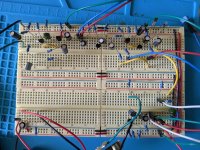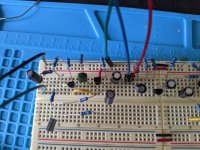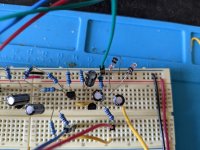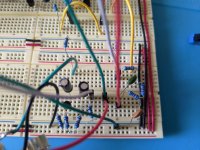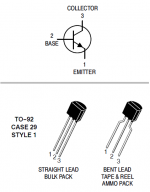Hello!
I've recently made my first breadboarding attempt (with the Uberfuzz — maybe a bit ambitious for a first time but I'm hoping to test a few component swaps). I've built it out, tested it, got zero signal, tore it out, and rebuilt it. Still no signal.
I'm preeeeetty confident in the circuit (like, maybe 80%). So I'm not looking for a diagnosis, though I'm attaching pictures because I know somebody's gonna ask for them.
What I'm wondering is: are there any sort of basic things that trip beginners up, "common sense" stuff that they just don't know about? For example: do I have to ground it somehow other than to the negative of the power supply? Do I have to connect the power circuit to the main circuit in a particular way (as opposed to just through the power/ground rails)? Are there certain schematic symbols that are commonly misread by new users?
I can't shake the feeling that my issue is a big, dumb, in-your-face one, as opposed to a particular connection somewhere.
I've recently made my first breadboarding attempt (with the Uberfuzz — maybe a bit ambitious for a first time but I'm hoping to test a few component swaps). I've built it out, tested it, got zero signal, tore it out, and rebuilt it. Still no signal.
I'm preeeeetty confident in the circuit (like, maybe 80%). So I'm not looking for a diagnosis, though I'm attaching pictures because I know somebody's gonna ask for them.
What I'm wondering is: are there any sort of basic things that trip beginners up, "common sense" stuff that they just don't know about? For example: do I have to ground it somehow other than to the negative of the power supply? Do I have to connect the power circuit to the main circuit in a particular way (as opposed to just through the power/ground rails)? Are there certain schematic symbols that are commonly misread by new users?
I can't shake the feeling that my issue is a big, dumb, in-your-face one, as opposed to a particular connection somewhere.
Attachments
Last edited:

